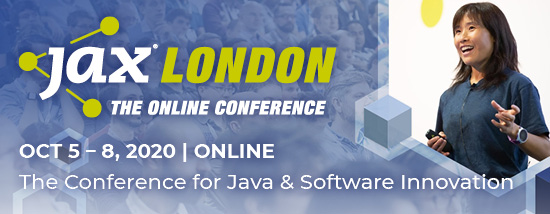A research study by The National Center for Women & Information Technology showed that “gender diversity has specific benefits in technology settings,” which could explain why tech companies have started to invest in initiatives that aim to boost the number of female applicants, recruit them in a more effective way, retain them for longer, and give them the opportunity to advance. But is it enough?
Three years ago, we launched a diversity series aimed at bringing the most inspirational and powerful women in the tech scene to your attention. Today, we’d like you to meet Dr. Anna Hilsmann, group leader “Computer Vision & Graphics” at the Fraunhofer Heinrich Hertz Institute (HHI) in Berlin.
Today’s Woman in Tech: Dr. Anna Hilsmann, group leader “Computer Vision & Graphics” at the Fraunhofer Heinrich Hertz Institute (HHI) in Berlin
Dr. Anna Hilsmann is one of Germany’s leading researchers in the field of “Computer Vision and Computer  Graphics”. In her research, she combines methods from the fields of machine learning, computer vision, computer graphics and visual computing to develop new solutions for a wide range of applications in multimedia, industry, augmented reality, security and medical technology. At Fraunhofer HHI Anna Hilsmann heads the department “Computer Vision and Graphics”. In 2016 she was awarded the ARD/ZDF “Women & Media Technology” prize. She was Google Anita Borg Scholar and received the VBKI Science Award for her dissertation in 2015.
Graphics”. In her research, she combines methods from the fields of machine learning, computer vision, computer graphics and visual computing to develop new solutions for a wide range of applications in multimedia, industry, augmented reality, security and medical technology. At Fraunhofer HHI Anna Hilsmann heads the department “Computer Vision and Graphics”. In 2016 she was awarded the ARD/ZDF “Women & Media Technology” prize. She was Google Anita Borg Scholar and received the VBKI Science Award for her dissertation in 2015.
When did you become interested in technology?
I always had a great interest in mathematics, at first less in really technical things. My father is a mathematician and already during my school years, we solved mathematical puzzles at dinner. Good math teachers certainly played a big role as well. When I was eight years old, one of my closest friends fell ill with a tumor and received a very advanced prosthetic leg. At that time I really wanted to become a prosthesis manufacturer and thought about how prostheses could be controlled by nerve signals.
What has your career path looked like?
My path has been quite linear. Looking back, I would probably do it differently. My interest in mathematics, medicine and medical technology continued. At first, I couldn’t decide between studying medicine or mathematics. At the RWTH (Rheinisch-Westfälische Technische Hochschule) Aachen you could study electrical engineering and information technology with a focus on medical engineering and I had the feeling that my interests were connected here. In fact, pure electrical engineering had nothing for me. In retrospect, maybe I should have studied computer science or mathematics with a minor in medicine.
Our unconscious, clichéd thinking controls our perception and has a great influence on our decisions.
My diploma thesis, which I completed at Philips Research in Hamburg in the field of medical image processing, increased my interest in scientific work and especially in the topics of computer vision and machine vision. After my studies, I accepted a job at the Fraunhofer Heinrich Hertz Institute in Berlin. Here I had the opportunity to do research and at the same time keep a practical orientation. Parallel to my work at the institute, I received my doctorate in computer science at the Humboldt University of Berlin.
After my doctorate I took over the leadership of the research group “Computer Vision & Graphics” at Fraunhofer HHI in Berlin together with my long-time supervisor and mentor. Currently, we are a team of 12 people researching and developing new methods in image and video analysis and synthesis. We combine methods from the fields of machine learning, computer vision, computer graphics and visual computing to develop new solutions for a wide range of applications in multimedia, industry, augmented reality, security and medical technology.
Did you receive support from family and friends?
Many people have supported and promoted me – men and women alike. Above all, I was lucky to always have supervisors who encouraged me and showed me great trust. I do not have a real role model. My environment is full of inspiring people and I learn more every day.
Has anyone ever tried to put obstacles in your way?
No. I have always had people around me who supported me and from whom I could learn a lot. Most of all, I have stood in my own way because I did not trust myself to face challenges. Certainly, there were always situations in which I noticed that I was perceived differently as a woman than my male colleagues. But that doesn’t necessarily have to be bad, and if it is, you can adjust your behavior accordingly. But I am aware that many women experience things differently.
Which clichés have you encountered with regard to “Women in Tech”?
There are many clichés and they are shaped by both women and men. Our unconscious, clichéd thinking controls our perception and has a great influence on our decisions. In my opinion, women often decide against an ambitious career because of their internalized image of the male leadership world.
What have you developed?
Until my doctorate, I developed a lot myself. I worked in different projects on machine vision, image and video analysis and synthesis. During this time I was engaged in the development of hybrid image- and video-based animation methods. This combines the advantages of two animation and presentation methods – photorealism under real-time conditions of image-based methods and flexibility through animation and object modification of classical computer graphics methods.
In the meantime, I no longer do my own development work, but lead the research activities of the team. However, we have retained and pursued the approach of hybrid methods, which combines the advantages of different procedures. In the field of human modeling and animation, for example, we are currently developing approaches that combine classic computer graphics methods with real data and AI, thus combining photorealism and interactivity. Also in the field of AI we are working on hybrid approaches to combine their advantages.
Why are there so few women in the tech industry?
I think the reasons for this are complex. I experience it especially with my son that children are still confronted with gender stereotypes. Girls already lack the confidence to deal with math and science at school. At the same time, many girls have wrong ideas about technical professions and are put off. Positive role models are needed from an early age to motivate women to take up technical professions. On the other hand, a lot is already happening here. There are STEM programs and coding sessions for girls, targeted women’s development programs, etc.
Another reason is in my opinion a structural problem. I believe that often the work structures and work culture also lead to women leaving the tech industry earlier than men. Women have to adapt to male-dominated structures in order to be successful. This can be exhausting and frustrating. Furthermore, women unfortunately often get in their own way and don’t dare to do too much.
In your opinion, what advantages would there be if there were more women in the tech industry?
In general, it is certainly the case that diversity can only have a positive effect. Especially in the field of technology, innovations are driven by different perspectives and life experiences. Technological developments have an enormous impact on all our lives and society. Only if women play a significant role in shaping these technologies can they be brought closer to the user. But here, diversity does not only apply in terms of gender.
What does the future look like – will the diversity debate soon be history?
It is ok not to have a life plan. Very few people know after school where their path leads them.
I don’t like the word debate in the context of diversity. After all, diversity is not something we need to discuss, at best we need to talk about how we can create the right structures to achieve more diversity. I am confident that we are moving in the right direction, even though this task will certainly occupy us for a few more years. Awareness of diversity and gender parity is growing. Men are increasingly becoming active parents and taking on care work. In addition, the way we work is currently changing. Such structural change takes time. To drive it forward, it is important that more women work in technical professions and in management positions.
What advice (and tips) would you give to women who want a tech career?
My general advice is not to be afraid of wrong decisions and to get rid of labels. It is ok not to have a life plan. Very few people know after school where their path leads them. You should try to find out more about your interests and passions and then follow them. You are not yet fixed with the decision for a subject, because there are many ways and junctions.
My advice especially to women: Have courage and be self-confident! Because women are often less so than men and slow down themselves. They suffer more often from the so-called “Impostor Syndrome”: Even when women achieve great successes, they doubt their abilities and fear that they will eventually “blow up”. An eye-opener for me was when a top developer at Google, who had a PhD from the University of Oxford, told me that she had been walking through the venerable halls of her university for years, thinking: “Soon they’ll realize that I can’t really do anything”. So, have faith and trust your abilities!
More Women in Tech:
- Women in Tech: Kate Sills, Lead Software Engineer at Agoric
- Women in Tech: Susanna Lawson, CEO and Co-founder of OneFile
- Women in Tech: Richa Dhandhania, Head of Analytics, Raisin DS
- Women in Tech: Miriam Bressan, Manager Solution Engineering, Global Accounts in CEMEA and SEMEA at VMware Tanzu
- Women in Tech: Abigail Ramlogan, Marketing product evangelist at NetBrain
For even more Women in Tech, click here
The post Women in Tech: “Awareness of diversity and gender parity is growing” appeared first on JAXenter.
Source : JAXenter
















